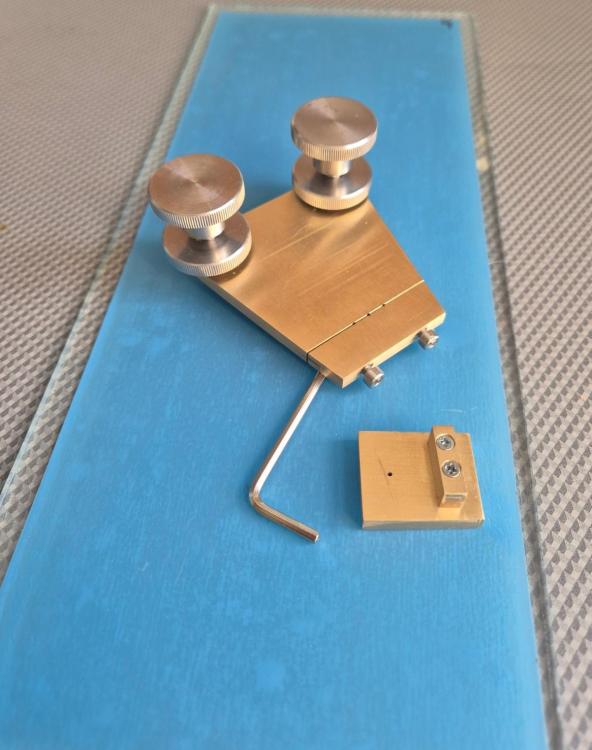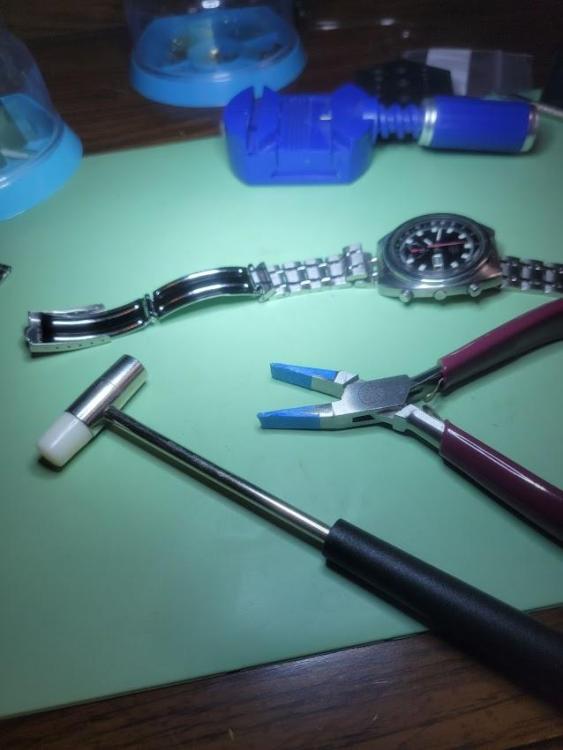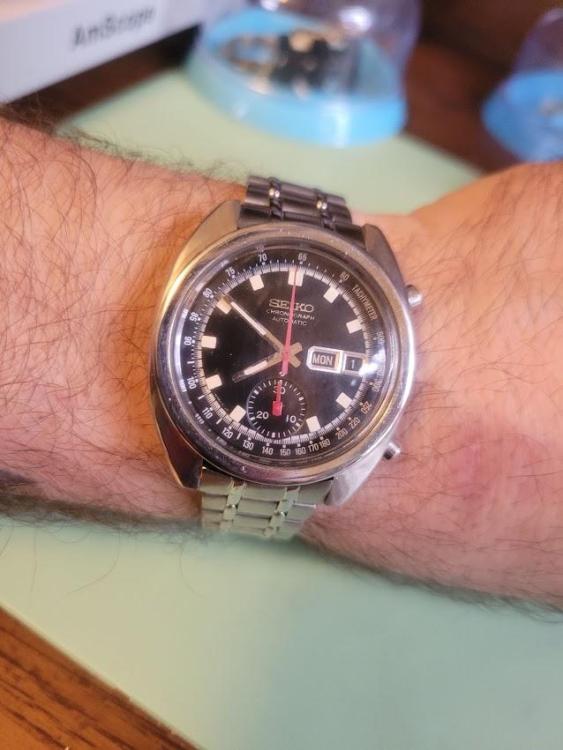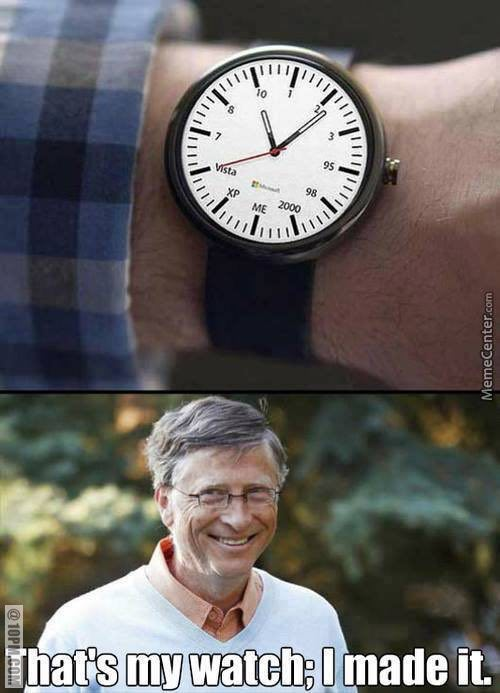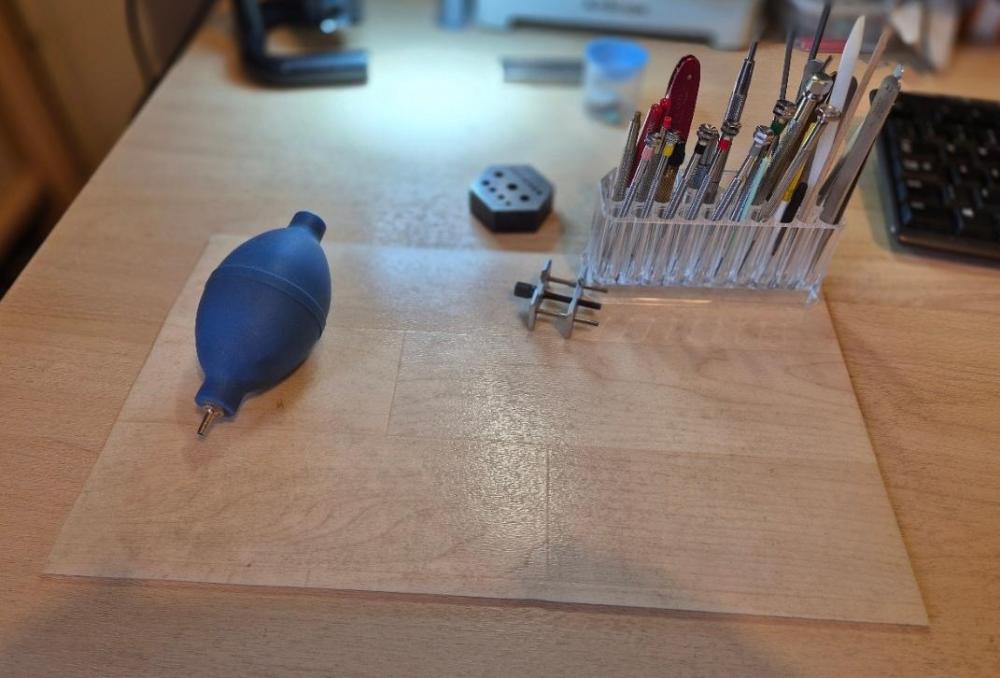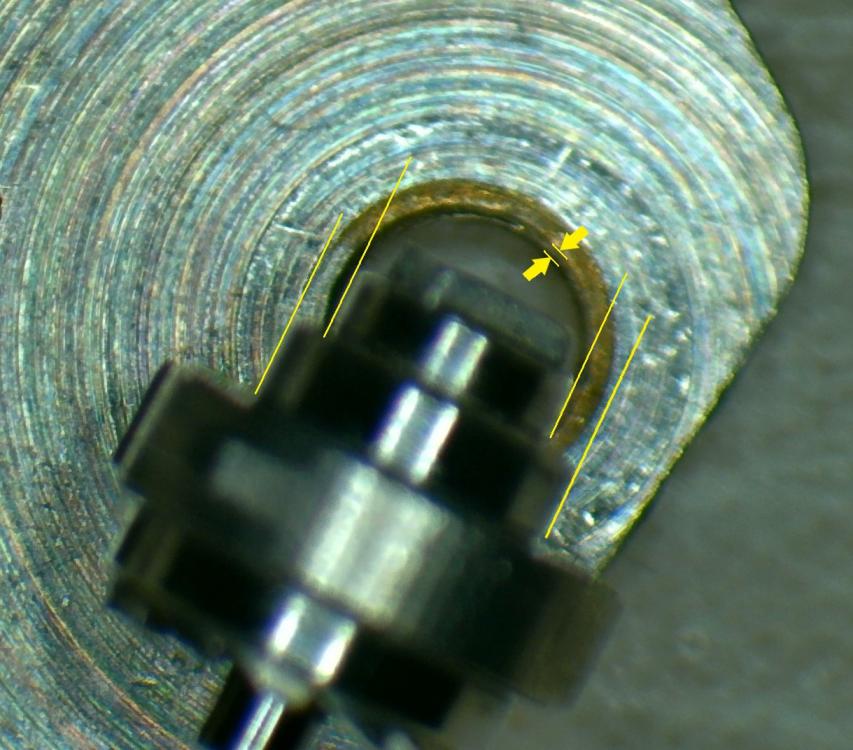Leaderboard
Popular Content
Showing content with the highest reputation on 04/18/24 in all areas
-
I finished my polisher yesterday, and just tried it out. I'm surprised how easy it is to get a good result - just a couple of minutes. I thought it was going to be more difficult - a nice surprise as most things in watchmaking are harder than you expect. I bought self adhesive 3M lapping film https://www.cousinsuk.com/product/film-lapping-3m-261x266x , 9, 3 and 1 micron, and stuck it to sheets of glass. The 9 micron is course enough to remove large scratches. I'm glad I used the M6 thumb screws as the large heads allow for small adjustments.2 points
-
2 points
-
I finally got around to replacing the clasp on my 1972 Seiko 6139B chronograph. One of the ears on the old one had completely worn away so it would randomly pop off my wrist, which is less than convenient. It did need a little percussive persuasion to get together, but I'm pleased to have it back on my wrist. I really love this watch.2 points
-
1 point
-
1 point
-
Have you looked here. https://moleroda.com/radial-wheels-for-cleaning-and-polishing/1 point
-
Thank you for your introduction and welcome to this friendly forum. We all look forward to your contributions and continued involvement.1 point
-
1 point
-
I recognize myself all too well. It takes a lot of experience and discipline to recognize when it's time to cancel and come back at a later time. Very well said! We should have a forum dedicated to this topic as it is critical to achieve success when working on watches. It's a lot more important than most other things related to watch repair. And yes, just a short break can make a world of difference!1 point
-
I had a box of extremely thin brass wire which I used to hang clock parts by when using lacquer. That will be ok for what you want just google very fine brass wire.1 point
-
VWatchie makes a very important point regarding the importance of being relaxed when working on watches. It’s importance cannot be overstated. One thing I’d add is that you will sometimes find yourself unable to relax and get ‘into the zone’ for watchmaking. If you’re too stressed, angry, tired, unwell, anxious or for any other reason can’t relax and concentrate only upon what you’re doing, then walk away from the bench. This applies no matter how skilled you are. Also, we are all human, there may sometimes be a day when for no good reason you find you can’t stop making mistakes. No problem. Just walk away from the bench, stop wasting your time and risking a bad mistake. Go and do something less exacting. Best Regards, Mark1 point
-
1 point
-
Tips for how you can minimise the risk of pinging parts. Make sure you have a decent set of well-dressed tweezers. When you're new I'd recommend a new Dumont No.2 or Dumont No.3 (Fine Tips). Those are well-dressed from the start and don't require maintenance for many, many years unless you abuse them. Finer tips than No.3 increase the risk of pinging parts. When gripping a part never use more force than is required to hold it without dropping it. When moving the part keep the tip of the tweezers as close to the work mat as possible, and always try to minimize the distance the part needs to travel. Practice this by placing some small parts on your work mat and then moving them around to designated places on your work mat. You can also scratch up the insides of the tip of the tweezers for improved friction between the part and the tweezers as shown by Kalle Slaap here. However, be extremely careful not to overdo it as it will risk creating a gap in the tweezers. Don't ask me how I know! Relax! This is more important than anything else and something we talk too little about. Relaxing is especially important when we're doing something which we perceive as difficult like replacing a tiny, stiff spring. In those situations, we tend to become very tense and that's when disaster strikes. Relaxing physically and mentally is something we need to practice but once we get it we can say goodbye to shaky hands. You have to honestly ask yourself "Am I relaxed?" If the answer is no, close your eyes, take a deep breath, and relax. Then repeat the question until you can relax no more. Be especially watchful of your shoulders. Try to relax them as much as possible. If we don't relax watch repair can become exhausting and in the worst case can kill the interest. On the other hand, if we learn to truly relax it becomes meditative and extremely enjoyable. BTW, did I mention the importance of being relaxed when working on watches?1 point
-
I couldn't resist Ross, and have started hacking some brass I have left over from the balance holder. Construction is under way ! What lapping paper do you use ? Alex uses 6, 3, 1, and 0.5 micron. Cousins don't have 6 micron, but they have 5 (4500 grit). I have 3000 grit wet and dry, so I'm wondering if I could go from that to 3 micron, 1 micron, and 0.5 micron (is this final one really necessary ?) I need to find some glass The hardest thing was finding the parts I knew I wanted, but had no idea what they are called. I found them eventually1 point
-
Good idea for small items. Alex uses the stump for larger objects. Same principle with shellac though.1 point
-
That's how I did it until I saw Kalle Slaap's video. As @ifibrinpoints out, if the plate isn't flat, it can be difficult to sit it on a flat stump, and get the punch exactly centred. I had this problem and ended up with the created chamfer not being symmetrical. Using the two punches makes it much easier to get the plate and punches perpendicular, and the punches centred in the hole. As @praezis points out, there is a danger of increasing vertical play, but this shouldn't usually be a problem. The pic shows one I just did, with the chamfer arrowed, being much less than the width of the arbor shoulder.1 point
-
If you are careful I don't think this is so. If you only deform a little at the edge of the hole, the 'shoulder' on the top of the arbor is wide enough to press on the flat surface of the bridge. I closed a hole in a barrel bridge this afternoon, and just put it under the microscope to check that the vertical play is not affected. And for the movement I'm working on, the bridge is far too thin to bush - at least for my tools/experience.1 point





